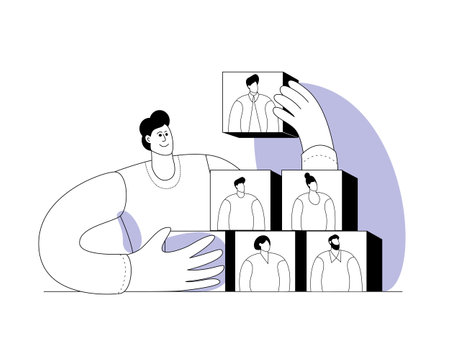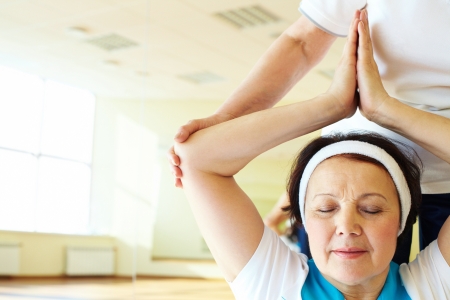Introduction to Physiotherapy Apps in India
India, with its vast and diverse population, is experiencing an increasing demand for physiotherapy services. As the country’s elderly population grows and awareness of physical well-being rises across all age groups, the importance of accessible rehabilitation and preventive care has become more apparent than ever. However, a significant challenge remains: much of the expert guidance and therapy resources are available primarily in English, limiting their reach among the majority of Indians who are more comfortable with Hindi or regional languages such as Tamil, Telugu, Bengali, Marathi, and Kannada. This language barrier often prevents individuals from accessing crucial physiotherapy support, especially in rural areas and tier-2 or tier-3 cities where local dialects dominate daily communication. In response to this need, a new generation of physiotherapy apps is emerging—designed specifically to offer guidance, exercises, and personalized plans in Hindi and other regional Indian languages. These digital platforms not only bridge the linguistic gap but also provide culturally relevant content that resonates with users’ daily lives. The following analysis delves into the rise of these apps, exploring how they empower Indian communities by making physiotherapy more inclusive, approachable, and effective for people from all walks of life.
2. Key Features to Look for in Regional Physiotherapy Apps
When selecting a physiotherapy app designed for users in India, especially those preferring Hindi or regional languages, it is vital to assess features that ensure the app’s usability and effectiveness across diverse communities and age groups. A thoughtful approach in app selection can help seniors, caregivers, and younger users benefit from accessible rehabilitation and wellness routines without language or cultural barriers.
Essential Features of Regional Physiotherapy Apps
| Feature | Description | Why It Matters |
|---|---|---|
| Local Language Interface | App menus, instructions, and video/audio guidance available in Hindi and other Indian languages (e.g., Tamil, Telugu, Bengali, Marathi). | Makes the app user-friendly for non-English speakers and elders, encouraging independent use. |
| Culturally Relevant Exercises | Routines adapted to common Indian lifestyles, postures (such as sitting on the floor), and traditional movements. | Ensures exercises are relatable, practical, and safe for Indian users of all ages. |
| Accessibility Options | Larger fonts, high-contrast visuals, voice commands, and audio descriptions to assist users with visual or physical limitations. | Empowers seniors and differently-abled individuals to access physiotherapy resources confidently. |
| Age-Specific Content | Differentiated exercise modules for children, adults, and elderly; includes safety tips tailored by age group. | Delivers relevant care plans and reduces risk of injury from unsuitable exercises. |
| Offline Functionality | Ability to download exercise videos or guides for use without internet connectivity. | Critical for rural or low-connectivity areas common across India’s heartland. |
| User Support & Helpline Integration | In-app chat support or helplines available in multiple Indian languages. | Provides reassurance and guidance for first-time digital health users. |
| Community & Family Engagement Tools | Options to share progress with family members or join local support groups within the app. | Nurtures motivation through community encouragement—a valued aspect in Indian society. |
The Importance of Inclusive Design
An ideal physiotherapy app not only bridges language gaps but also addresses cultural sensitivities and accessibility needs. Whether supporting an elderly user in Kolkata or a young adult in Chennai recovering from injury, inclusive design ensures everyone receives appropriate guidance. By focusing on these key features, physiotherapy apps can serve as reliable companions on the journey towards better mobility and holistic wellness—right from the comfort of home.

3. Popular Physiotherapy Apps Available in Hindi and Regional Languages
Detailed Look at Top-Rated Physiotherapy Apps for Indian Users
In recent years, the digital health landscape in India has seen remarkable growth, with physiotherapy apps emerging as a crucial support for individuals seeking rehabilitation and exercise guidance in their own languages. Here, we provide an in-depth look at some of the leading physiotherapy apps tailored for Hindi-speaking audiences and users of other regional Indian languages. These apps not only break language barriers but also respect cultural nuances, offering features designed for local needs.
1. PhysioApp Hindi
This app stands out as one of the first dedicated physiotherapy platforms available entirely in Hindi. PhysioApp Hindi offers step-by-step video tutorials for common exercises such as knee pain relief, back strengthening, and post-surgery rehabilitation. Its user-friendly interface includes voice instructions in Hindi and easy-to-follow illustrations, making it accessible for seniors and those less familiar with technology. The app also provides daily reminders and progress tracking, ensuring users stay motivated on their wellness journey.
2. Swasthya Mitra Physiotherapy
Swasthya Mitra Physiotherapy is designed to cater to diverse linguistic backgrounds, offering content in Hindi, Marathi, Tamil, Telugu, Bengali, and Gujarati. This inclusivity ensures that users from various parts of India can benefit from professional physiotherapist advice without struggling with language barriers. Key functionalities include personalized exercise plans based on user assessments, audio-visual guides in local dialects, and a community support forum where patients can share experiences and ask questions in their mother tongue.
3. Arogya Setu Physical Therapy
Expanding beyond its original COVID-19 tracking purpose, the Arogya Setu app now integrates physical therapy resources in multiple Indian languages. It collaborates with certified physiotherapists to curate safe home-based exercise routines suitable for different age groups and health conditions. The standout feature is its AI-driven chatbot that answers queries about exercises or injury prevention in the users preferred language—be it Hindi, Kannada, or Malayalam—making healthcare advice easily understandable.
Standout Functionalities Across Apps
Most top-rated physiotherapy apps catering to regional language speakers emphasize simplicity and accessibility. Features such as large-font options for elderly users, culturally relevant exercise examples (like yoga-based stretches), offline access to instructional videos for rural areas with limited connectivity, and integration with WhatsApp for easy sharing of progress reports are commonly found. These thoughtful additions reflect a deep understanding of both the physical and emotional needs of Indian families seeking gentle recovery at home.
4. Benefits of Using Local Language Physiotherapy Apps
In the diverse landscape of India, physiotherapy apps that offer native language support play a crucial role in reaching elders and rural communities. These applications, available in Hindi and other regional languages, provide numerous advantages over English-only alternatives. Below, we discuss how such language support enhances user engagement, improves comprehension, and fosters community inclusion among Indian seniors and users from remote areas.
Enhanced User Engagement
When physiotherapy instructions are presented in a user’s mother tongue, confidence and willingness to interact with the app increase significantly. Elderly individuals and those with limited formal education often find it intimidating to navigate English-based technology. By addressing them in familiar words and cultural references, local language apps transform the digital experience into something approachable and relatable.
Improved Understanding & Adherence
The clarity of medical instructions is vital for effective rehabilitation. Local language support ensures that users can easily understand exercise routines, safety precautions, and progress tracking. This leads to better adherence to therapy plans and reduces the risk of errors or injuries due to misinterpretation.
| Feature | English-Only Apps | Regional Language Apps |
|---|---|---|
| User Comprehension | May cause confusion for non-English speakers | Clear instructions improve understanding |
| User Confidence | Lower among elders/rural users | Higher when using familiar language |
| Cultural Relevance | Lacks local context & examples | Incorporates local customs & idioms |
| Community Support | Less likely to form peer networks | Encourages local community engagement |
Fostering Community Inclusion
Apps with native language interfaces not only break linguistic barriers but also help build stronger bonds within communities. For elders, being able to share their experiences or seek advice in their own language creates a sense of belonging. Group sessions, virtual workshops, or discussion forums conducted in regional dialects further empower users to participate actively in their wellness journey.
Case Example: Rural Rajasthan Elder Care Initiative
A physiotherapy app introduced in Marwari and Hindi saw participation rates double compared to its previous English-only version. Elders reported greater satisfaction, higher motivation to practice exercises, and increased willingness to recommend the app within their social circles.
Summary Table: Key Advantages of Native Language Support for Indian Physiotherapy App Users
| Benefit Category | Description/Impact |
|---|---|
| User Engagement | Easier navigation, reduced tech fear among elders and rural users. |
| Understanding & Adherence | Culturally relevant explanations improve health outcomes. |
| Community Inclusion | Enables group learning and peer encouragement in native languages. |
5. Challenges in Adoption and User Experience
While the rise of physiotherapy apps in Hindi and other regional Indian languages is promising, several challenges hinder their widespread adoption and optimal user experience across the country.
Digital Literacy Barriers
One of the primary hurdles is digital literacy. Many potential users, especially among the elderly and rural populations, may not be familiar with smartphone usage or app navigation. This lack of comfort with technology can prevent people from accessing valuable physiotherapy resources even when available in their mother tongue.
Internet Accessibility Gaps
Reliable internet connectivity remains a significant issue in many parts of India. Physiotherapy apps often require stable connections for video consultations, exercise demonstrations, or progress tracking. Users in remote villages or areas with poor network coverage may struggle to access essential features, reducing the effectiveness of these digital health solutions.
Cultural Nuances and Relevance
The diversity of Indian culture brings unique expectations regarding healthcare delivery. Some communities prefer face-to-face interactions with trusted local practitioners, making them hesitant to embrace virtual care. Additionally, physiotherapy exercises or advice may need adaptation to suit local habits, beliefs, or physical activities common in different regions.
User Interface and Language Adaptation
Even when apps are available in Hindi or regional languages, translation quality and user interface design can impact usability. Literal translations might miss the intended meaning or feel unnatural, leading to confusion. Effective localisation must include culturally relevant imagery, instructions, and clear language tailored for each target audience.
Addressing Trust and Privacy Concerns
Trust plays a crucial role in healthcare adoption. Many users remain sceptical about sharing personal health information digitally due to privacy concerns or unfamiliarity with digital platforms. Building trust through clear privacy policies, community outreach, and collaboration with local health workers is essential for greater acceptance.
Overcoming these challenges requires a collaborative approach involving app developers, healthcare professionals, community leaders, and government bodies to ensure physiotherapy apps are accessible, relatable, and effective for all segments of Indias diverse population.
6. Conclusion: The Way Forward for Indian Physiotherapy Apps
Summary of Best Practices for Developers
As we reflect on the current landscape of physiotherapy apps available in Hindi and other regional Indian languages, it is clear that the journey has only just begun. App developers aiming to serve the diverse needs of India’s vast population must prioritise a few key best practices. Firstly, local language integration should not be an afterthought but a primary design element. This includes simple navigation, clear instructions in languages such as Hindi, Tamil, Bengali, Marathi, Telugu, and others, along with culturally relevant illustrations and examples. Secondly, user data privacy and security must be respected at all times, following both national and international standards.
Suggestions to Foster Greater Access
To truly bridge the gap in physiotherapy guidance for Indians across urban and rural settings, accessibility is paramount. Developers should optimise apps for low-bandwidth environments and lower-end smartphones, ensuring video content loads efficiently even with limited internet connectivity. Offline features or downloadable modules can empower users in remote areas. Partnerships with healthcare providers or local clinics may help spread awareness about these digital resources among those who need them most.
Building Trust and Usability
The success of physiotherapy apps hinges on building trust through evidence-based content and regular updates aligned with current medical guidelines. In-app feedback mechanisms should be simple and welcoming so users feel their voices are heard. Elderly users or caregivers may benefit from large fonts, voice-guided instructions, and step-by-step exercise demonstrations tailored to common conditions like arthritis or post-surgical recovery.
The Road Ahead
India’s physiotherapy app ecosystem is poised for significant growth if developers continue to adopt a user-first approach rooted in empathy and inclusivity. By embracing regional diversity and technological constraints unique to India, these digital solutions can transform rehabilitation journeys—one gentle step at a time—making quality care accessible to every Indian household.

